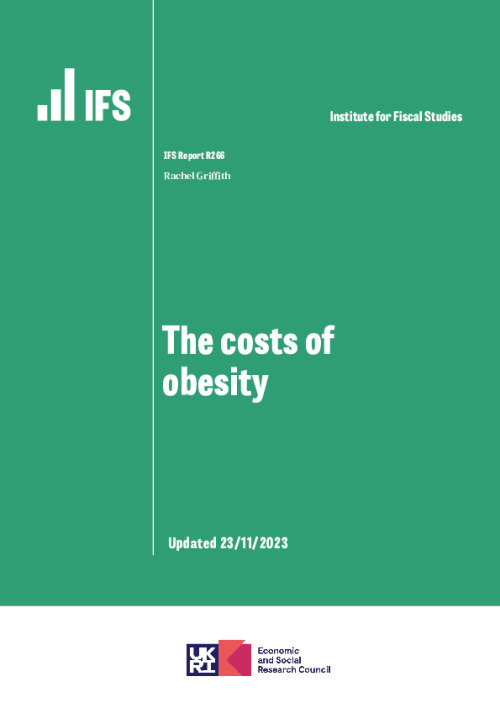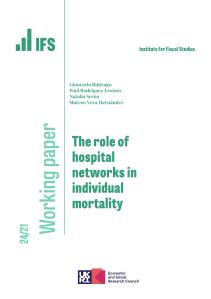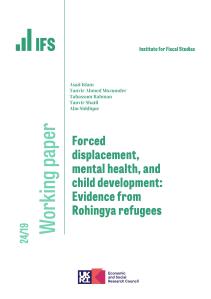Summary
Policies that aim to reduce the prevalence of obesity have been high on the policy agenda for many years – see, for example, DHSC (2020) and Dimbleby (2021). Understanding the costs associated with obesity is important for informing policy. Bell, Woolley, Toms and Lebre de Freitas (2023) provide what are to date the most detailed estimates of the costs of obesity and overweightness for the UK, updating previous work by Bell and Deyes (2022). The main updates provided in the new work are: (i) add the costs of overweight to the costs of obesity, (ii) include estimates from the losses that arise due to individuals leaving the labour force early, and (iii) updating the estimates to 2023 prices to account for inflation.
This note puts those estimates in context, discusses what costs are missing from their analysis, and which of the costs included are most relevant for policymaking (updating a previous not on Bell and Deyes (2022) estimates).
In summary, these updated estimates of the cost of obesity and overweight are:
· Around 4% of GDP, £98 billion per year
o the costs of obesity are estimated at around 3% of GDP, £74 billion per year
o the costs of overweight are estimated at around 1% of GDP, £24 billion per year
o for obesity the largest part of the costs (72%) are costs to individuals in reduced life expectancy and quality of life, costs to the NHS and lost workplace productivity represent the rest (28%)
o for overweight this is reversed, costs to the NHS and lost workplace productivity represent the higher share (60%) while costs to the individual make up the remaining 40%.
· The new analysis also considers the impact of the ageing population and estimates of increased prevalence to show that these costs are likely to increase into the future.
· This estimate would be considerably higher if:
o it included estimates of the costs of child and adolescent obesity, since these are likely very large and long lasting. Obesity is more prevalent in children and adolescents now than it was in the past. Pearson-Stuttard et al. (2023) show that ‘overweight and obesity in adolescents is associated with the development of obesity-related complications and multimorbidity, which increased over 5 years ...’.
o they included lost efficiency at work, the estimated cost of lost workplace productivity only include the costs not participating in the labour market.
· The estimate would be lower if:
o a lower value of a quality-adjusted life year (QALY) was used; the analysis uses the official Green Book value (HM Treasury, 2022); however, they show in their earlier report that if they instead used the value used by the NHS (as a threshold for treatment), which is lower, this would reduce their estimates;
o individual costs were not included; not everyone agrees that the costs to individuals in reduced life expectancy and quality of life are relevant for policy; this would reduce the estimated cost to £35 billion per year.
o the savings associated with BMI-caused deaths through savings to the NHS, and in taxes, benefits and pensions, were included; Tovey (2017) estimates these as £3.6 billion in 2016.










